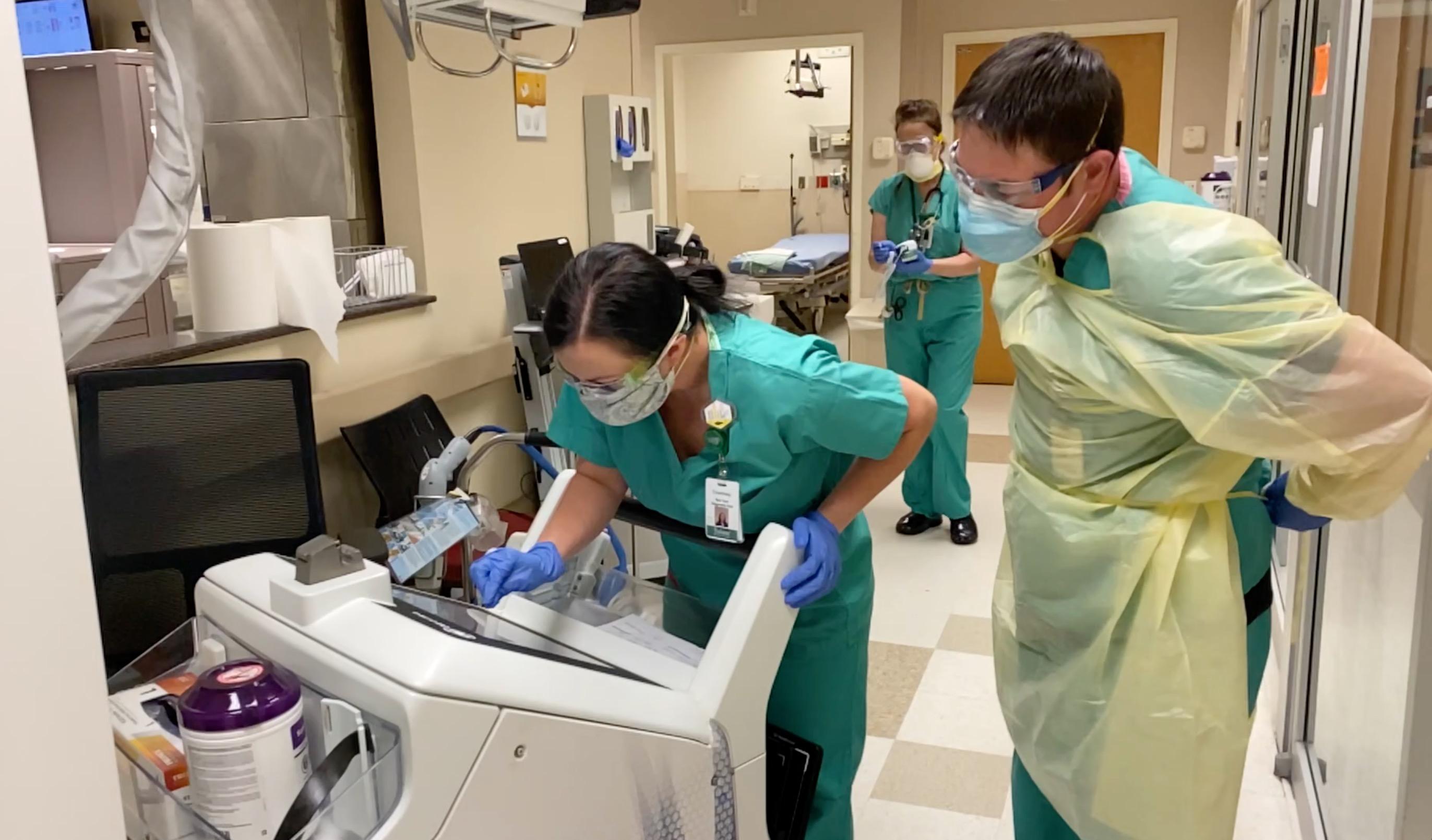‘All hands on deck’ for doctors on the front lines of COVID-19 care
The numbers continue to rise — the number of beds being made available for patients, the number of people on the front lines and the number of Tulane doctors, nurses, support staff and volunteers leading the battle against COVID-19.
The number of COVID-19 cases in Louisiana continues to increase daily too. As of April 28, the state had 27,286 confirmed cases of the novel coronavirus. More than 1,665 people are currently hospitalized across Louisiana because of the virus, with 244 of those patients on ventilators.
“Everyone — including our physicians, nurses, researchers, custodial staff and more — is working with a spirit of collaboration and giving all their time and energy to fight on the front lines of the COVID-19 pandemic,” said Dr. Lee Hamm, dean of Tulane University School of Medicine.
There are more than 180 Tulane medical residents and fellows directly involved in treating COVID-19 patients, at three New Orleans area hospitals, Tulane Medical Center, University Medical Center and Southeast Louisiana Veterans Health Care System. Each facility has increased its capacity, adding more ICU beds, ventilators and staff to cover the influx of patients.
In addition to those treating patients face-to-face, 200 residents and fellows of Tulane University School of Medicine are contributing in supporting roles from pathology, to radiology and consultation.
“We are all hands on deck,” said Dr. Geraldine Menard, section chief of general internal medicine and geriatrics at the School of Medicine. “I’m so proud of all of our general internal medicine faculty working in the hospital wards and our ambulatory physicians who have learned a tremendous amount about telemedicine and virtual visits over the last two weeks. We have leaped forward in having that capability for our patients and being able to remain connected with them.”
Tulane Medical Center has seven teams covering expanded clinical services. Each team consists of a faculty-attending hospitalist, an upper-level resident, and two interns. University Medical Center has eight teams, with one team working with long-term patients.
These teams have expanded and divided into dedicated ward, non-COVID medicine teams and COVID-only medicine teams as about half of the patients in the hospitals are either COVID-positive or suspected of having the virus.
“It is a privilege to work with some of our finest clinicians,” said Dr. Elma LeDoux, professor of medicine. “Despite the heavy workload, clinical care has been driven by an academic approach. Each morning, there is a ‘Covid Huddle’ at 9 a.m.; at this time residents, nursing supervisors, and attending physicians, along with Infectious Disease faculty, gather to discuss the latest literature (which is pouring out daily), review trends in our own COVID+ patients, and refine treatment protocols.”
“We assess new information that is coming in everyday about this virus,” Menard said. “We are creating diagnostic and management algorithms which have evolved from week to week as we have gaining new knowledge from reports out of China, Italy, France, and others around the world.”
The mental toll on healthcare professionals treating patients is heavy, said Dr. Joshua Denson, associate director of the pulmonary and critical care medicine fellowship program. But he says every other service line in the hospital is stepping up to help care for patients. Families aren’t allowed in the ICU because of the virus, so psychiatry residents have been assisting by making phone calls to the loved ones of patients. Anesthesiology residents are helping with procedures such as arterial lines and intubations to free up the burden on ICU residents.
“This is part of Tulane’s multispecialty and multidisciplinary approach,” Denson said. “We’re all part of a medical team that is able to strategize and allocate resources appropriately in this time of crisis.”
This isn’t the first time Tulane doctors have been battle tested. For Menard, the response from clinicians echoes memories of the days following Hurricane Katrina.
“The energy level in getting out there on the streets, helping as many patients as we can help, that is the same energy and enthusiasm like we had in the post-Katrina environment,” Menard said. “Allowing physicians to rapidly assess situations, make decisions, leading teams are skills for which we are well equipped. The destruction was visible post-Katrina and we don’t have that. This is ‘invisible’ (from the outside) and the streets are relatively quiet, with no crowds, and people practicing social distancing, that is one of the biggest differences.”

